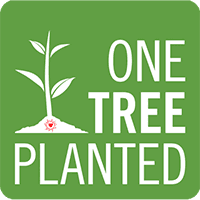
25 trees will be planted on your behalf for every experience purchased, via our partnership with One Tree Planted.
See more at onetreeplanted.org
The Culture Week is designed to introduce you to the local Himalayan culture, to give you an understanding about the local traditions, and to take you on a variety of sightseeing tours around Sikkim such that you will get in-depth knowledge of Sikkim and also experience the beauty that Sikkim has to offer. Not only that, each day is perfectly designed so that you will have a relaxed and an experiential journey appreciating impressive Buddhist Monasteries, learn cooking local food, and learn a bit of the local language which will help you to interact with local people throughout your stay.
The activities that you will be introduced to during this week is more described in the itinerary below.
Volunteer experiences have a direct and positive impact on local communities by injecting money into the local economy through the purchase of food, transportation, and tourism activities. Volunteering is a great way to give back to the comunity and make a difference in the world. Depending on the type of volunteer experience you are interested in, your time can be spent improving educational resources and opportunities, providing medical services to underserved communities, or promoting environmental conservation and sustainable farming techniques.

25 trees will be planted on your behalf for every experience purchased, via our partnership with One Tree Planted.
See more at onetreeplanted.org

1% of gross sales will be donated to 1% for the Planet-approved charities via our partnership with 1% for the Planet.
See more at onepercentfortheplanet.org
An area of unspoilt natural beauty, framed by snow-capped Himalayan peaks. The capital of Sikkim, Gangtok, reflects this tiny state’s extraordinary ethnic diversity. In the crowded city which spills precariously down a ridge, Lepchas (the region’s original inhabitants) live alongside Tibetans, Bhutias, Nepalis and Indians from the plains. Though now full of modern structures, Gangtok’s “Shangrila” aspects can still be experienced in pockets of the city and in its alpine environs.
Until 1975, Sikkim was a kingdom with the status of an Indian Protectorate. It was ruled by the Chogyals Buddhists of Tibetan origin, whose dynasty began in the 17th century. However, the British Raj’s policies of importing cheap labour from neighbouring Nepal for Sikkim’s rice, cardamom and tea plantations drastically changed Sikkim’s demography, soon Nepali Hindus constituted 75 per cent of the state’s population. In 1975, the population of Sikkim voted overwhelmingly to join the Indian Republic, ending the rule of Palden Thondup, the last Chogyal.
Arrive Sunday at Pakyong Airport, Sikkim (PYG) or Siliguri Bagdogra Airport, Bagdogra (IXB) in our pickup window of 08:00 to 20:00
The day will begin with introductions to your fellow participants. And then with an orientation session which will introduce you to the Sikkimese Nepali culture, do's and don'ts, social behaviour norms, cultural sensitivity as a traveler in Sikkim and safety precautions during your travel. Get to learn the language and talk about the project. Then we go out to visit the MG Marga - MG Marg of Gangtok, also known as MG Road (Mahatma Gandhi Road) is the town center and the main market area. It's a long stretch of an open-air mall. And then an orientation tour around the market area.
In our center, there is a mini library, a dining room, a lounge area where you can hang out with fellow participants and a beautiful garden to relax.
Furthermore, there is a refrigerator which you are welcome to use to store food and beverages.